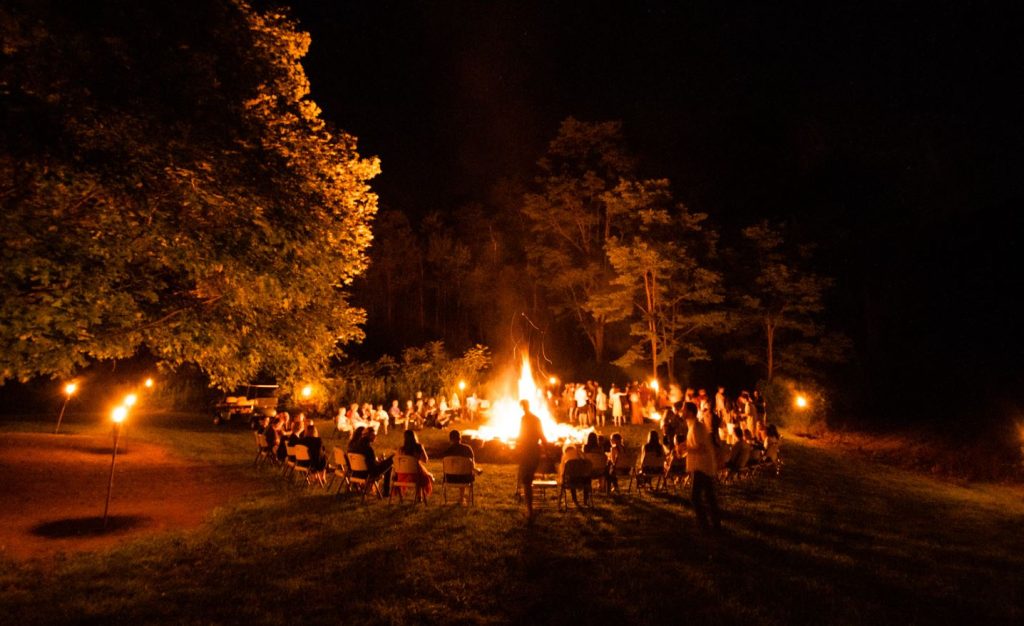There’s something almost otherworldly about storytelling around a campfire. The crackling flames, the cool night air, and the way shadows dance on nearby trees create an atmosphere ripe for the magic of imagination.
For centuries, people have gathered around fires, exchanging tales of adventure, mystery, and humor. The intimacy of a fire naturally draws people together, setting the stage for a perfect storytelling experience.
But not every story is created equal—captivating your audience requires a mix of atmosphere, structure, and delivery. It’s a skill that we can add to our repertoire of other key camping skills.
I will be giving future tips and lessons for addressing specific groups — friends, family, young adults, or children. And I also will focus in the future on specific types of stories in the future — funny, scary, true mysteries, etc.
But for now, let’s explore the basics for how to turn your campfire stories into unforgettable moments. I will also include several examples of great storytellers in action!
Setting the Scene: Creating an Atmosphere of Wonder
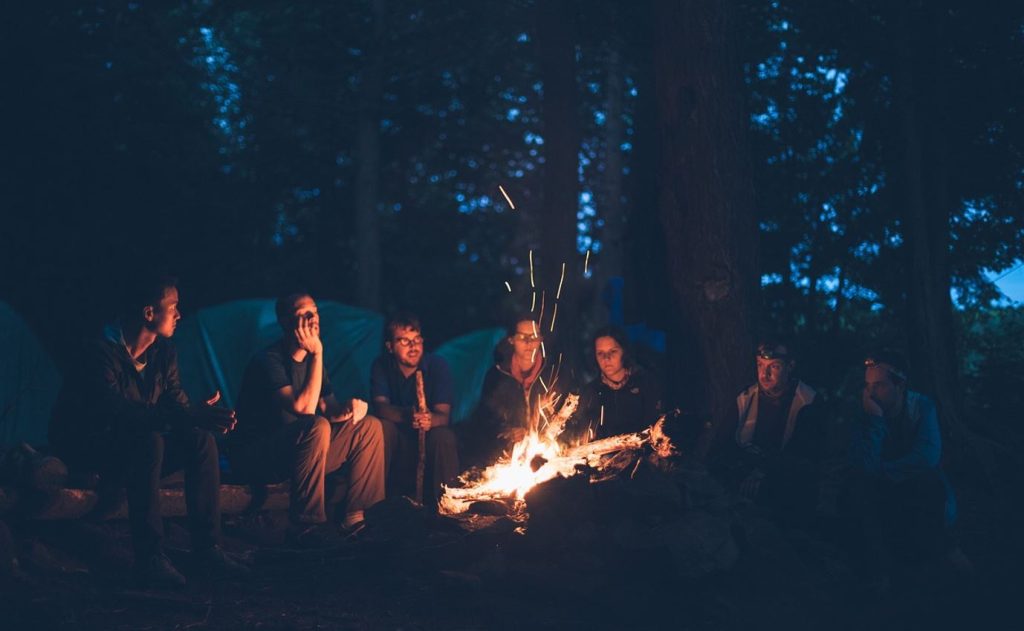
Choosing the Perfect Spot Around the Fire
A well-chosen location can amplify your story’s impact. The ideal campfire setting is more than just about warmth. Whether you’re by a lake, surrounded by towering trees, or on a quiet beach, make sure the location lends itself to an immersive experience.
Look for places where nature feels close, yet the firelight still keeps everyone huddled together. When the physical surroundings are just right, the story almost tells itself.
Using Natural Sounds and Darkness to Enhance the Mood
Nature offers a symphony of sounds that can underscore your narrative. The gentle rustle of leaves, the distant call of an owl, or the occasional snap of a twig can create a soundtrack that feels like it’s part of your story.
Let the darkness around you become a tool. Silence holds power—use the stillness between words to build tension and give the audience time to let their imaginations wander into the unknown.
Lighting Tricks: Shadows and Flickers for Dramatic Effect
The firelight is more than a source of warmth. The way it flickers and casts dancing shadows can enhance your storytelling in profound ways. Use those shadows to your advantage—lean in when delivering a key moment or let your face be half-hidden to add mystery.
A well-timed flicker or sudden gust of wind extinguishing part of the flame can become a natural part of your narrative.
Understanding Your Audience: Know Who Is Hearing Your Story
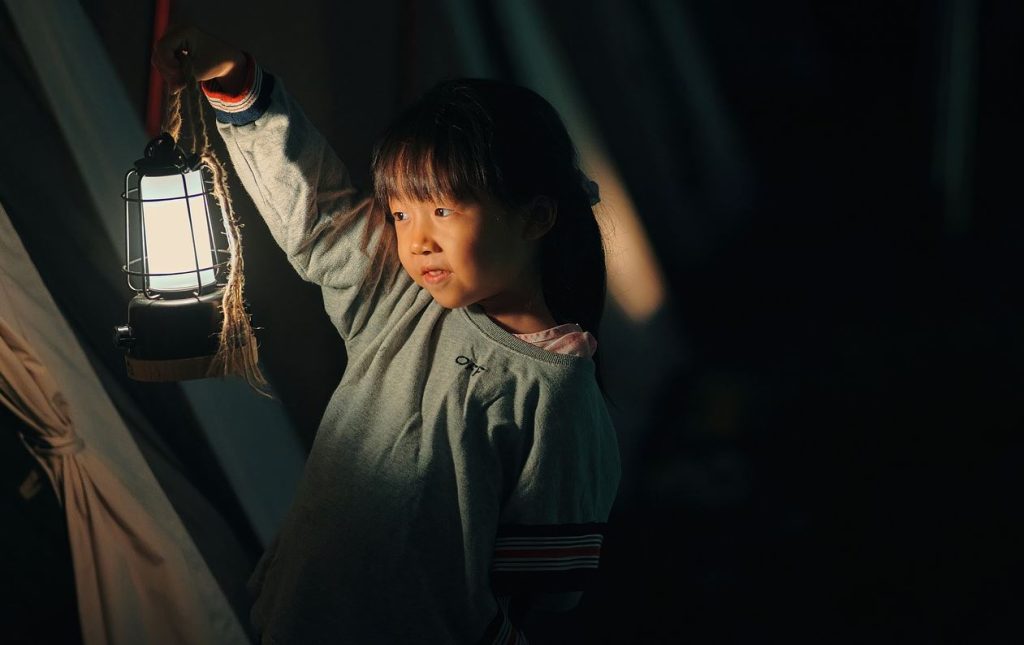
Tailoring Tales for Kids, Teens, and Adults
Suffice to say, not all stories suit every age group. Campfire stories for kids should be designed to enhance magic, wonder, and a hint of harmless mischief.
Teens, on the other hand, might prefer something a bit edgier, maybe with a twist of the unexpected.
Adults? They appreciate depth, nuance, and often, a touch of nostalgia.
Knowing your audience’s age and preferences will allow you to craft a tale that resonates deeply with them.
Balancing Humor and Suspense Based on the Group
Striking the right balance between laughter and edge-of-your-seat suspense can be tricky but crucial. Younger audiences might prefer light-hearted fun with just a sprinkle of “scary.” But for older audiences, mix in some moments of genuine tension, offset with humor that feels natural and unforced.
The key is to read the room—if your audience seems restless, add a joke; if they’re wide-eyed, keep the tension simmering.
How to Gauge the Energy Level and Adjust the Story Flow
As a storyteller, you must remain attuned to your audience’s energy. Are they leaning in, eyes wide, completely absorbed? Or are they fidgeting, glancing around, or whispering to each other?
Knowing when to pick up the pace or slow down for effect is essential.
If the energy dips, don’t be afraid to take a brief detour, perhaps with a spontaneous joke or an interactive question, before diving back into the story’s heart.
The Power of Story Structure: Build It Right
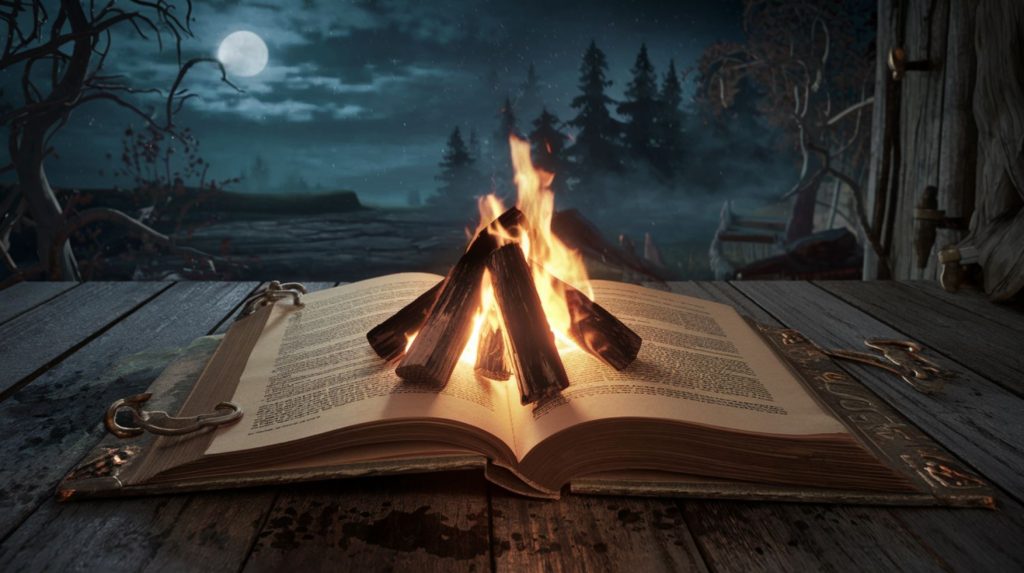
Starting with a Hook That Grabs Attention
Every great story begins with a hook—a moment that snatches your audience’s attention from the start. Maybe it’s a strange noise from the woods, an unexpected discovery, or a quirky character introduction.
The key is to make them sit up and listen, eager to know what happens next.
Developing Characters the Audience Can Care About
People don’t just remember stories; they remember the characters within them. Build your characters with care, giving them traits that your audience can either relate to or be intrigued by.
Whether it’s a brave explorer, a cunning trickster, or a mysterious stranger, flesh them out in a way that makes the audience invested in their journey.
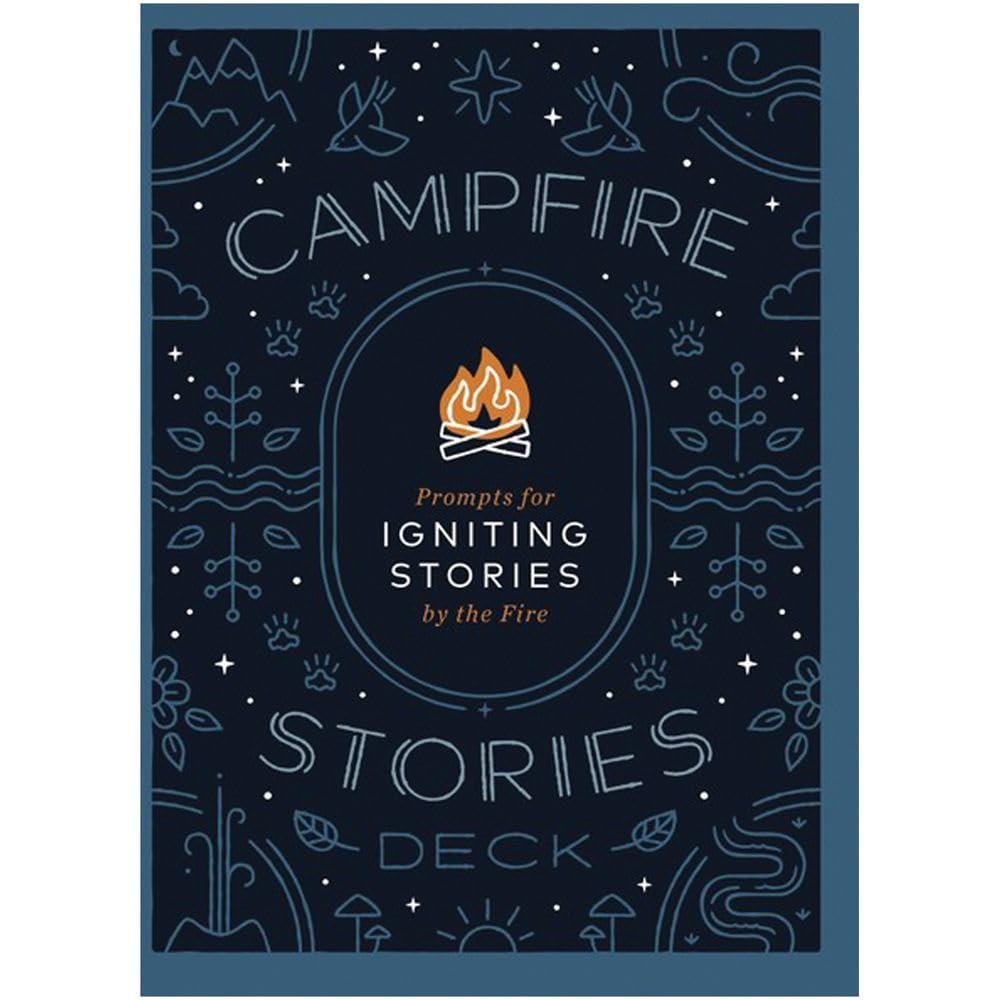
Still intimidated at the thought of creating your first campfire tale?
Here are 50 prompt cards to easily set you on your way to becoming a great campfire storyteller.
How to Maintain Suspense with Perfectly Timed Twists
A good campfire story isn’t linear—it should keep your listeners guessing. Throw in unexpected twists, whether it’s a sudden change in a character’s fate or a revelation that flips the narrative on its head.
Timing is crucial here. Reveal too much too early, and you lose suspense; reveal too late, and your audience may lose interest. Find that sweet spot where anticipation builds and curiosity reaches its peak.
Using Your Voice as a Storytelling Tool

Pacing: When to Speed Up, When to Slow Down
Your voice is your greatest tool as a storyteller. Slow your speech during moments of mystery or suspense, letting each word hang in the air. Then, speed up during moments of action, excitement, or humor to convey urgency and excitement. Mastering this balance keeps your audience on their toes.
Playing with Volume: Whispering vs. Shouting for Impact
The campfire is an intimate setting, making your volume one of the most effective ways to manipulate mood. A well-timed whisper can pull your listeners closer, drawing them into the heart of the tale. Conversely, a sudden shout or exclamation can jar them—perfect for shocking revelations or moments of surprise.
How to Incorporate Unique Voices and Sound Effects
Different voices for characters or sound effects, like the snap of a branch or the creak of a door, can bring your story to life. Don’t be afraid to ham it up a bit; this is the time to let your inner actor shine.
A scratchy old man’s voice for a wise sage, a high-pitched giggle for a mischievous child—small touches that make a big difference.
The Role of Body Language: Bring Your Story to Life
First, let’s look at body language tips from a world-class public speaker. He’s not telling a campfire story, but every bit of his advice in this 2-minute video can be incorporated into your storytelling style.
Gestures that Match the Mood: Big vs. Subtle Movements
Your body language speaks just as loudly as your words. For moments of grandeur or excitement, let your arms stretch wide, emphasizing the drama. But for moments of suspense, keep movements subtle—maybe just a quiet tilt of the head or a raised eyebrow. Less is often more when building tension.
Eye Contact: Creating Personal Connections Around the Fire
There’s something powerful about locking eyes with someone during a story. It creates a connection that pulls them deeper into the narrative. Move your gaze around the group, making everyone feel like they’re a part of the story, not just passive listeners. A quick glance at the fire, then back to your audience, can underscore key moments.
Enhancing the Story with Props and Movements
The great thing about campfires is that you don’t need elaborate props to make an impact. A stick can become a sword, a rock, a treasure chest. Small movements can mimic actions in the story, adding a visual element to your words. Just be careful not to overdo it—sometimes, the imagination is the most powerful prop of all.
Adding Interactive Elements: Keep Your Audience Engaged
Dave from Bushradical on YouTube has amassed a huge following of more than 1 million subscribers. You will see why in this video, which incorporates so many of the storytelling techniques discussed so far, as well as our focus now on the use of interactive elements.
Even though he is only speaking to his virtual audience, we can imagine how these stories would be received by a real group out in the wilderness.
Involving the Audience in Key Moments of the Story
Sometimes the best way to captivate an audience is to make them part of the story. Ask a rhetorical question that makes them think or let them decide a character’s fate with a simple choice. When they feel involved, they’re more likely to stay engaged.
How to Use Questions to Keep Listeners Hooked
Sprinkling in questions like, “What would you do?” or “Have you ever experienced something like this?” keeps your audience mentally involved in the narrative. Questions turn passive listeners into active participants, helping them feel more invested in the outcome of the story.
Fun Games and Call-and-Response Techniques
Call-and-response can turn a simple story into a communal experience. Invite your audience to chant along, finish a sentence, or guess the next twist. Little games, like repeating certain phrases or sounds, add layers of interaction that heighten the fun and draw everyone closer.
Crafting the Perfect Ending: Leave Them in Awe

Deciding Between a Twist, Moral, or Cliffhanger
Endings matter. Whether you leave your audience in stunned silence with a twist or provide them with a thoughtful moral to chew on, how you conclude your story can define the entire experience. For serial storytellers, a cliffhanger might just be the perfect way to keep them coming back for more.
How to Wrap Up Your Story with a Memorable Last Line
A story’s final line should be unforgettable. It’s the echo that will linger in the minds of your audience long after the fire has dimmed. Whether it’s poignant, chilling, or downright funny, make sure it hits home. This is your moment to cement the story’s impact.
Creating a Space for Reflection or Discussion Afterward
Once the story’s over, don’t just move on to the next activity. Allow space for a moment of reflection. Encourage your audience to share their thoughts, reactions, or even questions. This communal discussion helps solidify the story’s message and gives it life beyond the campfire.
Concluding Thoughts: The Timeless Art of Campfire Storytelling
Storytelling around a campfire isn’t just an activity—it’s an art form. One that taps into a primal connection we all share. It’s about more than just the words you speak; it’s about the atmosphere you create, the way you engage your audience, and the magic of shared experience.
So the next time you gather around the fire, armed with a story, remember these tips and make your tale one that will be remembered for years to come!
👉 Are you an experienced campfire storyteller? Don’t forget to leave a comment for our community and offer your own tips and tricks for captivating an audience. 🕵️♂️
See our Latest Posts:
- 21 Fun Camping Games to Entertain Yourself Outdoors
- How to Set Up a Hammock for Camping
- Compact Camping Gear That Saves Space in Your RV or Van
- Top 15 Most Beautiful Waterfalls In The World To Visit In Your Lifetime
- Top 12 Camping Gadgets and Accessories You Didn’t Know You Needed (2025)
Write A Guest Post For Us!
Are you passionate about camping and the great outdoors?
We’re excited to announce that we’re accepting guest posts
in the camping and outdoor niche!

